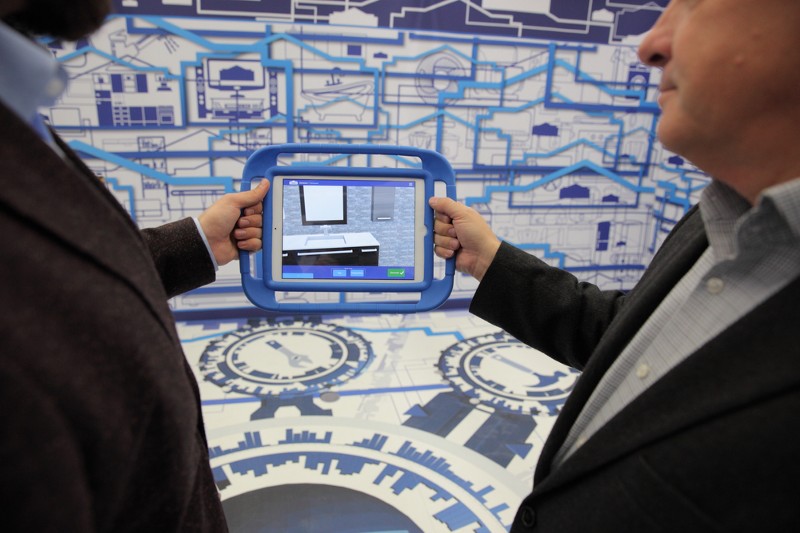
Visualizing a home improvement project in a Lowe’s Holoroom
Scenario planning has been around for a half century. Royal Dutch Shell used it to foresee and react to the oil crisis of the early 1970s — and still uses it. Futurist Brian David Johnson added science fiction to the scenario-planning formula, helping Intel predict future applications of its microprocessors in the 2000s.
But it wasn’t until 2012, when Ari Popper opened the doors of his Burbank, California consultancy SciFutures, that science fiction emerged as a mainstream organizational visioning, strategy development and even prototyping tool.
History has shown that, with sci-fi, art presages life: think iPad, IBM’s Watson, the smartphone and much more. Directed energy weapons have made less-than-killer-moon-scale versions of the Death Star a reality. Arthur C. Clarke imagined communication satellites more than a decade before Sputnik. Even those old pre-Jetson’s mainstays, flying cars, are on the cusp of commercialization.
In that spirit, Popper and his SciFutures team created for The Hershey Co., a graphic novel about a future sated with 3D-printed food. For Ford, they imagined a future without car ownership (subscription transportation services and sharing among the alternatives). For the North Atlantic Treaty Organization, they envisioned the future of warfare. Most famously, SciFutures worked with Lowe’s to create the Star Trek holodeck-inspired Holoroom, a 20-by-20-foot space in which shoppers can see how Lowe’s products might look in their own homes. Customers pick out products on a tablet, then use a virtual reality headset to see those products placed in context in the home. [more at Medium.com]
